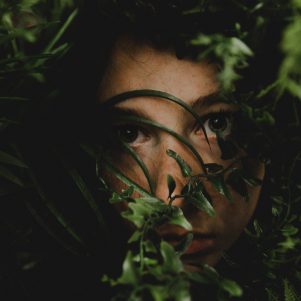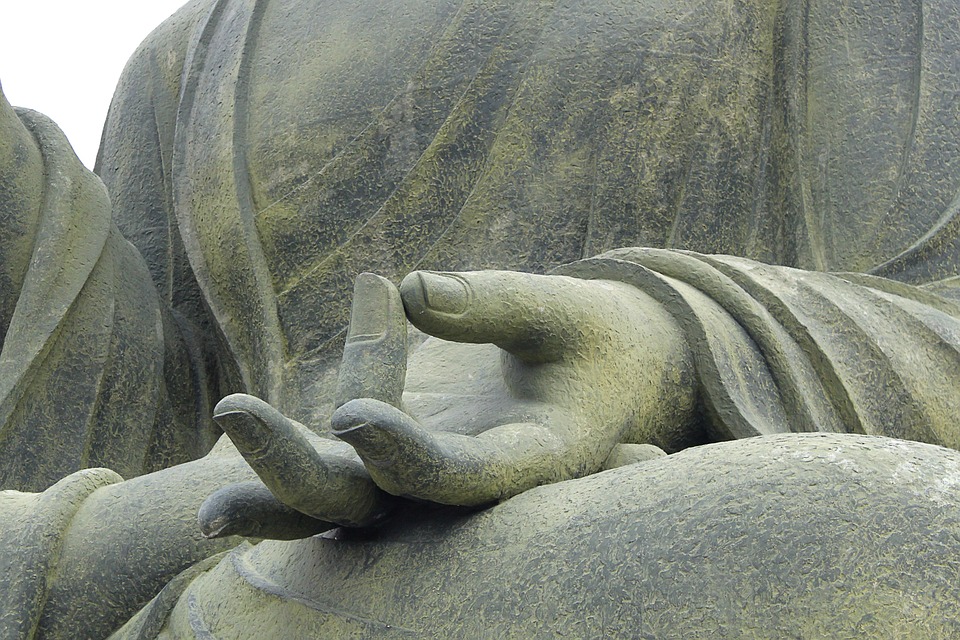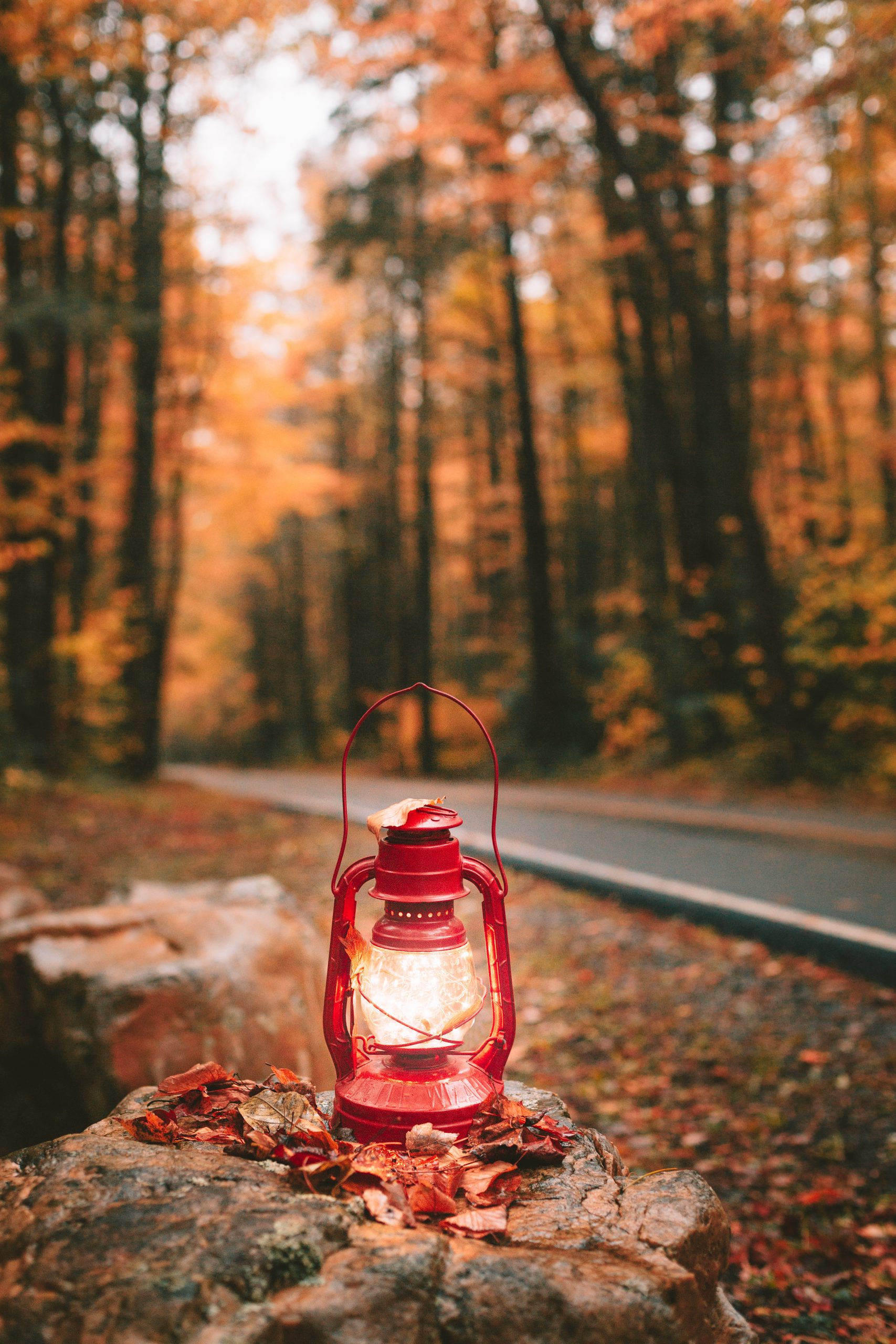My Original Face Before My Parents Were Born: The Tryst with Koans
Article By Sukesh Motwani
 A Zen master asks his student, “Without thinking good or evil, in this very moment, What is your original Face?
A Zen master asks his student, “Without thinking good or evil, in this very moment, What is your original Face?
…. Show me your Original Face, the face you had before your parents were born.”
“Quickly, quickly, without thinking right and wrong…”
(Before the engines of thought and feeling start revving, before you’re making judgements or starting to act out of some motivation like trying to win or to please)
“…before your parents were born” (before the whole mad story of You heaves into the picture, complete with family legacies handed down through the generations)
…what is your original face?” (Before all that, who are you truly?)
So this pithy question is like asking a sunflower what it was before it was a sunflower, or the wind before it was wind? A true Zen master never asks to see something that isn’t already there. We often think of gates as appearing before us, inviting us to enter, but this koan is like a gate appearing behind you, inviting you to step back into abiding nowhere—that is, to return to the vastness where you’re a true person of no rank or status, your face aglow with the original rising sun. What is it like to respond from that place? What is it like to step back through the gate into the koan, into the moment, and let your abiding-nowhere heart-mind appear? To gaze with your original face on the original faces all around you?
Koans can be termed as paradoxical anecdotes or riddles without a solution, used in Zen Buddhism to demonstrate the inadequacy of logical reasoning and ‘provoke’ enlightenment. Zen Buddhists use koans during meditation to help them unravel greater truths about the world and about themselves. Zen masters have been testing their students with these stories, questions, or phrases for centuries.
The word koan or gongan in the original Chinese, means a public case or precedent. We draw from the precedent, as per the understanding of the masters. Teachers may add their understanding when working on koans with students, but those early guideposts are the basic frame of reference. Initially, koans were simply stories about things that had happened—a record of a conversation, usually between teacher and student, though sometimes between two students or other people. Over time, additional elements such as poetry and references to popular culture were folded into the developing body of koan texts.
Some mind-bending koans that I recommend readers to consider right at the beginning:
With empty hands I pick up the hoe.
(Mahasattva Fu[i])
To me, this koan suggests that an empty mind becomes the hoe for removing the impurities of our personality, the weeds of greed, anger and ignorance.
Someone ask Yunmen, “What is reaching the light?”
Yunmen replied, “Forget the Light. First give me the reaching.”
(Yunmen Wenyan[ii])
Often, after an exhausting intellectual struggle with a koan, the zen student realizes that the koan is actually meant to be understood by a deeper intuition. It serves as a surgical tool used to cut into and then break through the mind of the practitioner… Koans aren’t just puzzles that your mind figures out suddenly and proclaims, “Ah! The answer is 4!” They wait for you to open enough to allow the space necessary for them to enter into your depths—the inner regions beyond knowing. For all aspiring philosophers too, koans befuddle us enough to allow a space almost devoid of the machinations of the thinking mind, to emerge…and we may get a true glimpse of our higher selves or the heart-mind. Thereby helping us in pursuit of the true nature of our identity and reality.
Many koans can be traced back to the collections of sayings amassed by Chinese priests in the 12th and 13th centuries. Each Koan School has its own, unique Miscellaneous collection, which is studied along with the classic texts like the Gateless Gateway and the Blue Cliff Record. The use of the koan as a formal teaching tool entered the West through the efforts of pioneering teachers such as Soyen Shaku, and his student Nyogen Senzaki who compiled his 101 Zen Stories in 1919 and Sokei-an Shigetsu Sasaki, a Zen master in the 1930s.
The epigraph below, called Honoring is from a longer Chinese poem made of koans about the journey home and then home itself. You enter koans through the door of your own life, right into the world around you.
For whom do you bathe and make yourself beautiful?
The voice of the cuckoo is calling you home.
Hundreds of flowers fall, but her cry never ends
Still clear even in the wildest mountains.
(Dongshan[iii])
Our yearning needs to be firstly honoured, the effort to build true conviction that there is something that will receive you if you make yourself ready. Bathed, washed free of entanglements and impurities, and then aspiring to the deepest kind of beauty. Flowers fall, which is a way the ancients had of saying that time passes, and the call is always present, even in the wildernesses of your life, the most confused and lost times. In Chinese legend, the cuckoo will call until her throat bleeds and turns the azaleas red. The way to honour the mystery of the world’s perseverance on our behalf is by hearing it and responding.[iv] And the meaning of Home can only be grasped by being able to see deeply the context of eternity in each moment of transience.
The moon shines on the river,
Wind stirs in the pines—
Whose gift is this long, beautiful evening?
(Yongjia Xuanjue[v])
Home is always just closer and waiting to be noticed even if it is not evident. As the Zen teacher Joan Sutherland aptly puts it ‘That is what our call and response with world is, like fellow travellers in the mist, listening for each other, carrying the lanterns of home inside us’. She narrates this touching tale in her book Through Forests of Every Colour – “A traditional Japanese countrywoman named Nanjo Sawako began sewing a wedding kimono for her daughter Naoko when she was still a little girl, as was the custom. But Nanjo Naoko didn’t grow up to get married and settle down in their small village; she became an international photojournalist.
She died covering the Afghan war of the 1980s. Her mother, who said she had hoped for a normal, common life for her daughter, who had never left her village before, heard a call and responded adding a moment of extraordinary grace to the story of the world. She made the dangerous journey to the front lines in Afghanistan,
carrying the wedding kimono. She found her daughter’s grave, marked with a simple wooden stake, and wrapped the remains in the kimono. A mother blesses her daughter’s life, even if it isn’t the life she would have chosen for her, isn’t even a life she entirely understands. But it was her daughter’s, and she gives it her blessing. She doesn’t turn her love away from what is painful. Isn’t this the ceremony that reveals the home in any moment? Even if this is not always the life I would have chosen for myself, it is mine, and I bless it. I bless this life that has been given into my care. It is home.”
Despite the legacy of centuries, koans have always been with us, and always are. They arise naturally in life situations and out of the dilemmas we face. At times of crisis, as when we lose someone we love through death or separation, we can find that we are facing ultimate questions such as What is the purpose of life? In the instance of the death of a loved one, we may find ourselves asking, Where has the one I love gone? At such times, we may somehow find the resilience to stay with a fundamental question until it resolves.
Koans can connect us with this larger life we lose sight of amidst the daily concerns of living in our consumerist society, and make us sensitive to the joys and agonies of this life… bringing us closer to the primordial mystery beneath the veil of daily life. But the purpose of realizing this, as the Chinese teacher Deshan said, is to break through to grasp an ordinary person’s life. Shibayama Zenkei, a twentieth-century Rinzai teacher, said that etymologically köan means the place where the truth is.
Koans invite us to take them into our lives so that we can experience the same state of consciousness as the characters in the story. Joan Sutherland cites this poem by Li Qingzhao, who was writing at the time the great old Chinese koan collections were being made. She evokes the encounter with koan, or the truth of our lives.
Often I recall that day,
the river pavilion
in the setting sun, and
we too drunk to know
the way home, As
our high spirits
fled, we started
to return late
in our boat,
but were confused,
entered,
deeply,
a place where
the flowering lotus
was in full bloom.
And struggling to go through,
struggling
to go through,
we startled
a whole sandbank of herons
into flight.
There are those golden moments of the evening by the river, our high spirits wear out, and on top of that we’ve lost the way back and now just struggling to get through. We don’t notice the lotus in full bloom all around us. But suddenly something happens, there’s a great whoosh of herons flying and this blur of movement, and the unpleasant story of the waning day, the struggle to get home—just hides itself and the whole universe that you experience in this moment is the heron. The disconcerting elements of our struggle now to figure the way back, will arise again – but our thinking minds organically blanked out in this moment of eternity, and have been changed by our experience of the herons, the messengers of eternity, who have reminded us that we too, golden moments and disillusioning ones, are eternity itself. So koans help us enter state of consciousness within the bounds of our ordinary lives, but in an instant dissolving those bounds.
Judy Roitman[vi] adds, “Zen Master Su Bong says that for working with koans, you have to be a great actor. We don’t have to pretend but that we completely become the koan. So if someone is hanging from a tree branch by her teeth, it’s you hanging from that branch, and you are hanging there completely, becoming that situation and fully witnessing it”. She also adds that when people give wrong answers to koans, the karma they carry, becomes visible. Our incorrect answers shows how our mind creates these feelings; we get to see our own delusions in a certain way.
A monk asked Kegon, “How does an enlightened one return to the ordinary world?”
Kegon replied, “A broken mirror never reflects again; fallen flowers never go back to the old branches.”
The reply to this well-known koan here would probably be – once a wise person is awakened to the nature of reality, that identification can never go away, and they can return to the ordinary state, but only to do and help others. And we can assume that the meaning of the “broken mirror” has something to do with unravelling truly the fact that the personality or the surface mind/body have never been truly one’s real nature. Hence showing that enlightenment is something you can’t unlearn, similar to how you can’t repair a broken mirror. One doesn’t need to identify as that body or this body and get so completely entangled with a name/status, a temporary role.
‘Wash your bowls’. (From the Gateless Gate)
Once a monk made a request of Joshu.
“I have just entered the monastery,” he said. “Please give me instructions, Master.”
Joshu said, “Have you had your breakfast?”
“Yes, I have,” replied the monk.
“Then,” said Joshu, “wash your bowls.”
The monk had an insight.
Commentary[vii]: I am the student in the midst of my life, waiting for life to happen. I am the teacher pointing to this latte on my desk. I am the bowl that needs washing and the breakfast already eaten. How do we enter our life fully? It is right here. How do we want to live? Can we allow all the joys and sorrows to enliven us? Or do we just go along with all our patterns and habits? People who are dying always remind me: ‘I can’t believe I wasn’t here for most of my life.’ That’s one of the most common regrets. Many people have not inhabited their life because they’re just waiting for other moments. How can we give ourselves fully to our lives, moment to moment? Don’t wait. Life is always right here.
Resolving a koan means identifying the doubt or question or wondering it raises in you, and then living that question until the insight contained within it comes clear. Having a question, not knowing something, is a good thing, not to be rushed. In its resolution, something is put to rest, and something is revealed. This can come in a sudden flash, whole and complete, or it can come gradually like the dawn. In the end, possibly you and the koan have come to an understanding.
Aspiring philosophers shall realise that their efforts at seeking and elevation of their own consciousness, will lead them organically to become actively compassionate and help improve the lives of one and all in their spheres of life. The final koan – Bodhisattva’s Koan (Blue Cliff Record, Case 89) is to help us understand this, as it looks at the archetype of compassion, the symbol of Guanyin and its thousand arms.
Yunyan asked Daowu, “How does the Bodhisattva Guanyin use those many hands and eyes?”
Daowu answered, “It is like someone in the middle of the night reaching behind her head for the pillow.”
Yunyan said, “I understand.” Daowu asked, “How do you understand it?” Yunyan said, “All over the body are hands and eyes.” Daowu said, “That is very well expressed, but it is only eight-tenths of the answer.” Yunyan said, “How would you say it, Elder Brother?” Daowu said, “Throughout the body are hands and eyes.”
A philosopher ought to have relentless self-awareness, a relentless awareness of how their body and mind acts, so that he/she may realise more of their true identity beyond it, and let the ideas of body and mind fall away. So the more one strives in this inner work, the closer we shall be led to truly embodying the one who experiences no separation from the other, and just walk on the path of being present as an active force for all. Yunyan’s ‘eighty percent’ reply is that this realization is like having eyes and hands all over our bodies. True, true, says his brother. But one hundred percent is that those eyes and hands are our body. There is no separation, between the universal self and the personal self, in each particular instance, in each particular person... Hence the koan simply expects to see the simplicity of this supreme compassion being depicted as ‘someone turning in her sleep and reaching a hand behind her head to adjust her pillow.’
The Zen master Bernie Glassman tells us “I define enlightenment as the depth to which one sees the oneness of life, the interconnectedness of life …. and the degree of your enlightenment can be measured by your actions.”
Our sincere efforts at understanding and weeding out negative tendencies and vices of our personalities, all our inner work and reflection, is not separate from the deep will and courage to be of help to one and all for the rest of our lives, through the pandemic, the climate crisis and the social upheavals of the Kaliyuga. In the midst of heartbreak and wonder, we need to learn how to summon our will and align with life each day, and with grace, strive for a new and better world by embodying the koan of Bodhisattvas, and say clearly, ‘We are all in’.
Image Credits: By Rachel McDermott / Unsplash / CC0
The entity posting this article assumes the responsibility that images used in this article have the requisite permissionsImage References
By Rachel McDermott / Unsplash / CC0
Permissions required for the publishing of this article have been obtained
Article References
Bibliography 1 Mahasattva Fu, (Great Zen Master, China, 5 or 6 century AD). 2 By Zen Master Yunmen Wenyan of the Tang Dynasty) 3 Dongshan, a Chan Buddhist Teacher of 8th century AD 4 Passage and Poems from Through Forests of Every Color - Awakening with Koans by Joan Sutherland 5 A Zen Master and Tiantai Buddhist Monk during the Tang Dynasty 6 Judy Roitman: The guiding teacher at Kansas Zen Centre 7 Commentary by Koshin Paley Ellison, Co-Founder of the New York Zen Center for Contemplative Care Book: Sutherland, Joan. (2022). Through Forests of Every Color - Awakening with Koans. Shambhala. Joan Sutherland is a teacher in the koan tradition, co-founder of the Pacific Zen School and founder of the Open Source, a network of communities. Many explanations used in this article are taken from her fabulous book. Other Sources: www.huffpost.com/entry/zen-buddhism-koan_n_563251dce4b 0631799115f3c/amp www.lionsroar.com/how-we-work-with-koans-and-how-they- work-on-us/ tricycle.org/article/green-koans-case-12-the-original-face/ www.patheos.com/blogs/monkeymind/2017/03/guanyin-use- many-hands-eyes-reflecting-zen-koan.html thebuddhafultao.wordpress.com/2012/01/29/some-great-koans/




What do you think?